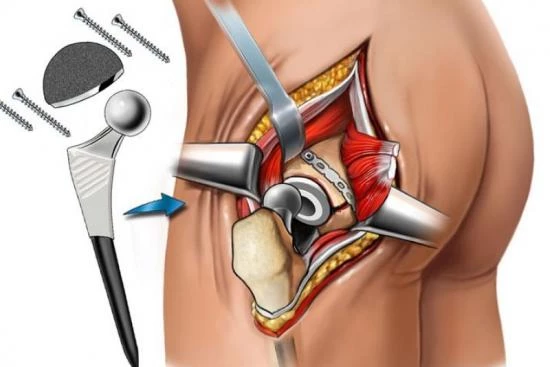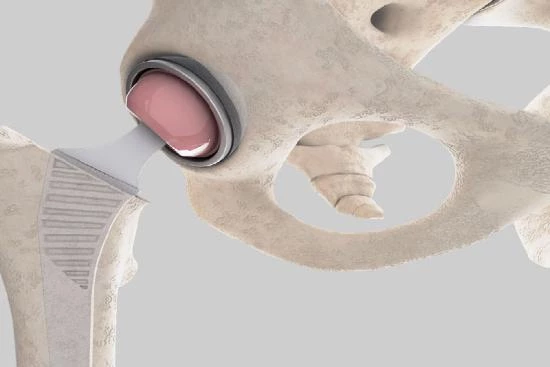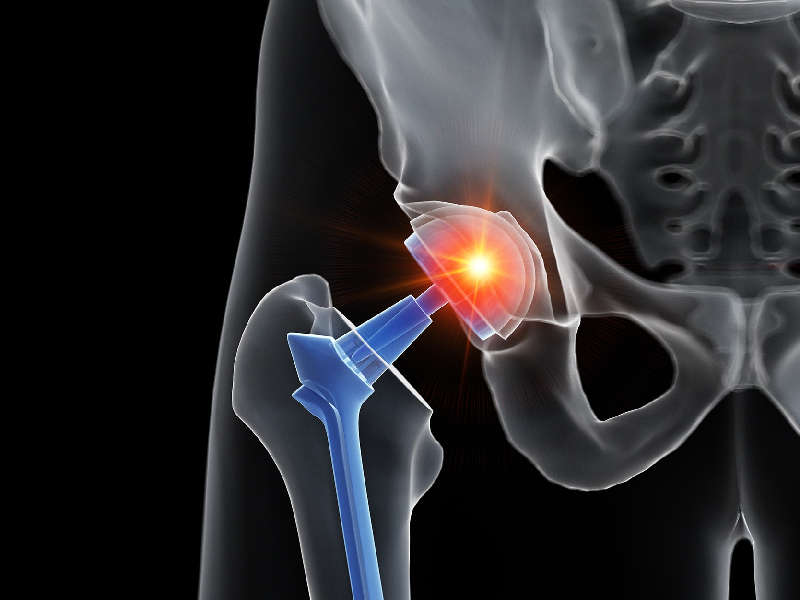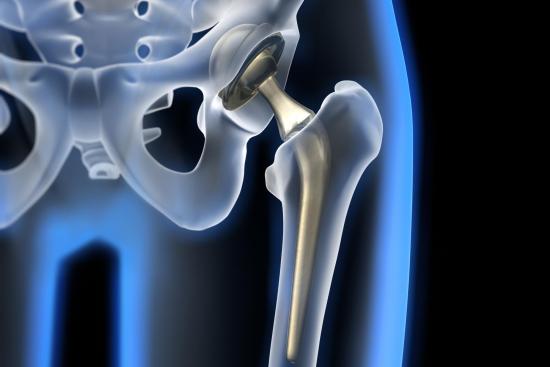Tired of letting hip osteoarthritis control your life? Don't let the pain get the best of you. In Turkey, our expert surgeons offer a personalized solution to help you regain optimal mobility. With our latest generation of hip replacements, you'll be able to live life to the fullest!
- People with chronic hip pain
- Elderly people suffering from the effects of osteoarthritis
- People with a severe hip fracture
- People suffering from the effects of rheumatoid arthritis
- Dislocation of the hip
- Infection
- Fractures
- Pains
- The operation lasts one to two hours
- Back to daily activities after one week
- Back to professional activities after 2 months
- 95%
Hip replacement surgery cost in Turkey
Benefit from high quality hip surgery in Turkey at an unbeatable price. Our partnerships with the best clinics guarantee personalized care and exceptional results.
Hip replacement surgery costs $7,500.
Don't wait any longer to regain optimal mobility! Contact us now for a free teleconsultation and a personalized quote.
Best Clinics with Verified Reviews

- Multispecialized hospital
- 7 operating rooms
- Capacity é of 170 beds

- Multispecialized hospital
- Hospital founded in 2007
- Very good reputation in ENT department
Hip replacement surgery: What is it?
A hip replacement is a surgical solution to replace a hip joint that has been worn out or damaged by osteoarthritis or other conditions. This procedure helps relieve chronic pain and restore optimal range of motion and quality of life.
During surgery, the orthopedic surgeon removes the worn parts of the joint and replaces them with artificial components, usually made of metal, ceramic or polyethylene. These materials are chosen for their durability and biocompatibility.
Hip replacement is indicated when conservative medical treatments (drugs, infiltrations) no longer provide significant relief.
Postoperative rehabilitation is essential for recovery, to strengthen muscles, improve mobility and regain full independence.
Types of hip prostheses: Metal, ceramic or plastic?
There are several types of hip prostheses available to meet the specific needs of each patient. The main types of hip replacement surgery include:
| Total hip replacement (THR) | Involves replacing the joint surfaces of the femur and acetabulum with artificial components. This procedure is used when both parts of the hip joint are severely damaged. |
| Partial Hip Replacement (PHR) | This is used when only one part of the joint is affected. Only the damaged part of the acetabulum or femur is replaced, leaving the healthy parts of the joint intact. |
| Dual mobility hip prosthesis | It improves the stability of the hip joint by incorporating an additional joint, which reduces the risk of dislocation by allowing greater freedom of movement. |
| High-quality ceramic hip prosthesis | Known for their durability, long-term wear resistance, and low coefficient of friction. |
| Metal-on-metal hip replacements | These have metal components, such as a metal head that articulates with a metal socket. However, their use has become less common due to concerns about the release of metal particles and increased wear. |
| High-density polyethylene hip replacement | High-density polyethylene is a durable plastic material used for the components of the prosthesis. It offers good wear resistance and is often combined with other materials, such as metal, to form a hybrid prosthesis. |
The choice of hip replacement is made in conjunction with an orthopedic surgeon who will determine the most appropriate implant for your situation on a case-by-case basis.

Prosthesis implantation process in Turkey
Hip replacement is a surgical procedure that replaces damaged parts of the hip joint with artificial components. The procedure begins with general anesthesia to ensure patient comfort throughout the procedure. The orthopedic surgeon then makes an incision in the hip area to access the joint.
The damaged parts of the femur and acetabulum (the joint cavity of the pelvis) are carefully removed. Artificial implants, which consist of a metal stem inserted into the femur and a plastic, ceramic, or metal cup attached to the acetabulum, are then precisely positioned to mimic the natural movement of the hip.

Outcomes and durability of hip prostheses
Osteoarthritis of the hip is now a public health problem. The good news? Hip replacement, a common surgical procedure, gives thousands of people a new lease on life every year.
Hip replacement surgery guarantees results in terms of:
- Quick and lasting pain relief: In the vast majority of cases, pain is significantly reduced or eliminated within the first few weeks after surgery.
- Restoration of mobility: Patients quickly regain the range of motion and ease of daily movement they had lost.
Although modern prostheses are extremely durable, wear and tear is inevitable over the long term. In fact, younger people may experience a loosening of the prosthesis after about fifteen years. If this happens, further surgery may be required.
Regular follow-up visits are necessary to assess the condition of the prosthesis.
Risks & complications of surgery
Although hip replacement surgery is a common and often effective procedure, it can carry a number of risks and complications.
Like any surgery, hip replacement surgery carries a number of risks and complications.
Potential risks during surgery include:
- Vascular or nerve damage: Accidental injury to blood vessels or nerves near the joint may cause bleeding or loss of sensation.
- Bone fractures: Surgical maneuvers may occasionally cause fractures of surrounding bones.
Potential postoperative risks:
- Hematoma: Internal bleeding may form a hematoma, which may require surgery to drain.
- Infection: Infection of the surgical wound may occur, requiring antibiotic treatment and, in some cases, removal of the prosthesis.
- Calcifications: The formation of calcified deposits in the surrounding tissues can limit hip mobility.
- Scarring: The scar is usually located on the buttock, but the exact location can vary from patient to patient.
The hip prosthesis has proven its effectiveness in the treatment of hip pain due to its excellent results, especially in our partner clinics in Turkey.

Next-generation technique for hip implant placement
Technological advances in Turkey have optimized the results of total hip arthroplasty. The "SUPERPATH" technique features a minimally invasive approach that preserves muscle and tendon integrity. By constructing the implant in place, it avoids the tissue trauma associated with conventional techniques and promotes faster, less painful recovery.
This innovative procedure represents a significant advance in the treatment of hip osteoarthritis.

Which activities can you engage in after a hip replacement?
The healing process for the hip after a hip prosthesis surgery usually takes around four weeks. Nevertheless, the duration of recovery time varies for each patient, depending on their:
- Previous health status
- Lifestyle
- Age
- Eating habits
Your life will change after hip replacement surgery. However, you won't encounter any pain or discomfort.
Usually, patients will need some time before going back to their daily activities. Throughout the recovery process, it's important to maintain a lifestyle that promotes faster healing.
While you will eventually be able to resume most of your regular activities, you may need to modify the way you do them.
Here are some examples:
- Avoid crossing your legs at the knees for 8 weeks after the surgery.
- Avoid bringing your knee up higher than your hip.
- Don't bend forward while you're sitting.
- Avoid picking things from the floor while you are sitting.
Share this page
Generally, the hip replacement cost in Turkey includes the prosthesis cost, the surgery rate including post-operative tests, hospitalization, and hotel stay fees.
You can request a free quote for a more detailed cost estimate of prosthesis installation in one of our partner clinics in Turkey.
Following hip replacement surgery, certain movements are prohibited in order to maintain the device's stability and avoid complications. These movements include:
- Crossing the legs
- Excessive bending forward or backward
- Jumping
- Twisting movements
- Extreme positions
Turquie Santé provides you with the best orthopedic surgeons specialized in hip replacement surgery in Turkey. Our accredited professionals are internationally recognized, with a minimum of 15 years' experience in orthopedic surgery.
Yes, hip replacement surgery generally leaves a 10-20 cm scar on the outer thigh. However, the scar size may vary depending on the stiffness degree and build of the hip.
It's totally normal to feel some pain when a hip prosthesis is fitted. However, this pain is moderate when the patient is at rest.
Post-operative pain is relieved by analgesics to improve the functionality of the operated hip.






